
HUNTING EQUIPMENT
Hunting is known to be an ancient practice, but just how ancient was made clear by a discovery in a coal mine outside Schoningen, in northern Germany. There, archaeologists uncovered nine wooden spears, along with the remains of several dozen butchered horses. The spears have been dated to around 300,000 years ago, meaning they were likely used by early Neanderthals. This countered the belief of some scholars that early humans were scavengers who had not yet mastered hunting.
The spears, which measure around seven feet long, were produced by experienced weapon makers who planned their hunts in advance, says archaeologist Nicholas Conard of the University of Tubingen, who oversees excavations at Schoningen. All but one spear was made from spruce trees that had grown slowly in cold conditions, producing especially hardwood. The shafts were designed to be thicker, and therefore heavier, near the front, lending them greater stability in flight, and the tips were carved slightly off-center, to avoid the soft pith at the tree trunks’ cores. “They knew exactly what they were doing,” says Conard.
Esta historia es de la edición May/June 2020 de Archaeology.
Comience su prueba gratuita de Magzter GOLD de 7 días para acceder a miles de historias premium seleccionadas y a más de 9,000 revistas y periódicos.
Ya eres suscriptor ? Conectar
Esta historia es de la edición May/June 2020 de Archaeology.
Comience su prueba gratuita de Magzter GOLD de 7 días para acceder a miles de historias premium seleccionadas y a más de 9,000 revistas y periódicos.
Ya eres suscriptor? Conectar

ORIGINS OF PERUVIAN RELIGION
While investigating looters' holes at the site of La Otra Banda in northern Peru's Zaña Valley, archaeologist Luis A. Muro Ynoñán of the Field Museum and the Pontifical Catholic University of Peru spotted carved blocks around seven feet below the surface.
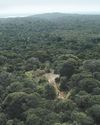
ISLAND OF FREEDOM
Many of the enslaved Africans sent to Brazil beginning in 1549 were from what is now Angola, where one of the most widely spoken languages was Kimbundu.
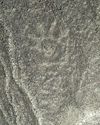
NAZCA GHOST GLYPHS
From the 1940s to the early 2000s, geoglyphs were discovered in the Nazca Desert of southern Peru depicting animals, humans, and other figures at the rate of 1.5 per year.

COLONIAL COMPANIONS
The ancestry of dogs in seventeenth-century Jamestown offers a window into social dynamics between Indigenous people and early colonists.

BAD MOON RISING
The British Museum houses around 130,000 clay tablets from ancient Mesopotamia written in cuneiform script between 3200 B.C. and the first century A.D.
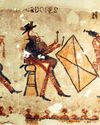
DANCING DAYS OF THE MAYA
In the mountains of Guatemala, murals depict elaborate performances combining Catholic and Indigenous traditions
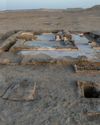
LOST GREEK TRAGEDIES REVIVED
How a scholar discovered passages from a great Athenian playwright on a discarded papyrus

Medieval England's Coveted Cargo
Archaeologists dive on a ship laden with marble bound for the kingdom's grandest cathedrals

Unearthing a Forgotten Roman Town
A stretch of Italian farmland concealed one of the small cities that powered the empire
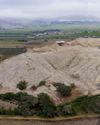
TOP 10 DISCOVERIES OF 2024
ARCHAEOLOGY magazine reveals the year's most exciting finds